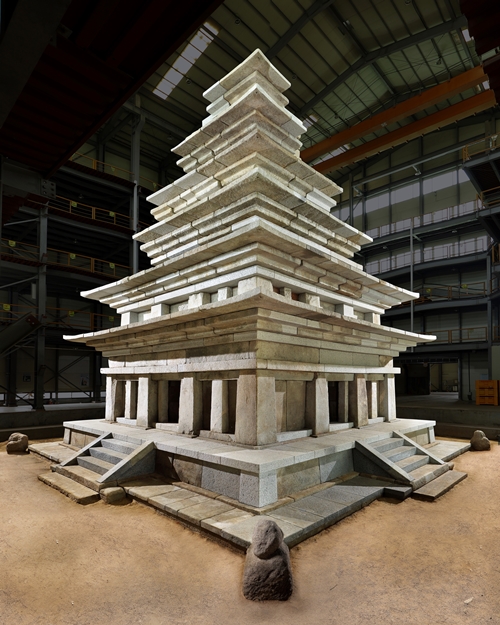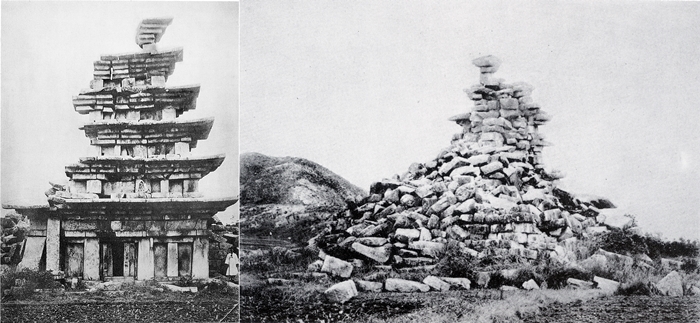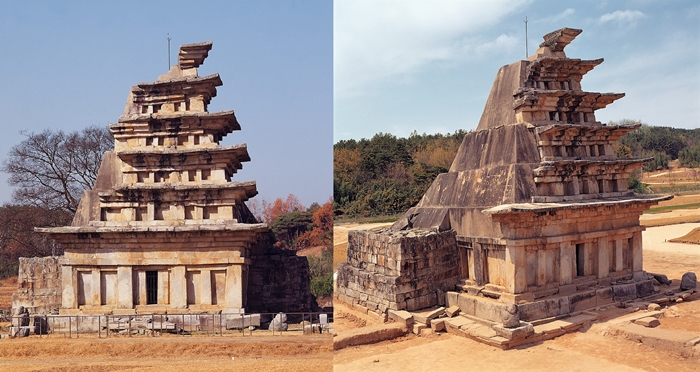
On June 20, the Cultural Heritage Administration unveiled the famous stone pagoda at Mireuksa Temple in Iksan, National Treasure No. 11, after 20 years of restoration and repair.
By Kang Gahui and Kim Young Shin
Photos = Cultural Heritage Administration
The oldest and biggest stone pagoda in Korea, the famous pagoda at Mireuksa Temple in Iksan, National Treasure No. 11, has finally been restored to its original shape after 20 years of repair and restoration.
The National Research Institute of Cultural Heritage, part of the Cultural Heritage Administration, held an on-site briefing session and explained the disassembling and restoration process used to bring the pagoda back to life.
The Buddhist stone pagoda was built during the reign of King Mu of Baekje (무왕, 武王) (580-641). Much later during Joseon times (1392-1910), it was damaged after being struck by lightning. In 1915, during colonial times, Japanese authorities covered the damage with concrete.
In 1998, experts diagnosed its structural problems after a safety inspection and decided to disassemble the pagoda for repair. However, disassembling the pagoda took a decade. This is the longest time for any one national heritage item to have ever undergone restoration.
The rejuvenated pagoda will be open to public in December.

A photo taken in 1910 shows the east side (left) and the west side of the pagoda at Mireuksa Temple in Iksan.

A photo of the stone pagoda at Mireuksa Temple in Iksan taken before the repairs shows the east side (left) and the southeast side of the structure. In 1915, Japanese colonial authorities attempted to fix the damage by using concrete.
kgh89@korea.kr
Most popular
- Military discharge sets stage for reunion of all 7 BTS members
- 'We are back!' BTS Festa heralds hyped return of K-pop phenom
- K-pop streaming on Spotify skyrockets 470-fold in 10 years
- Hallyu gala MyK Festa from June 19 to feature K-pop acts
- President Lee leaves for G7 Summit in Canada on first int'l trip
